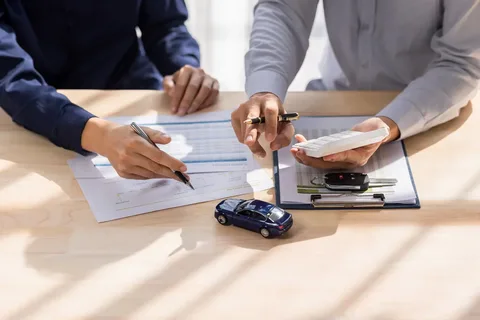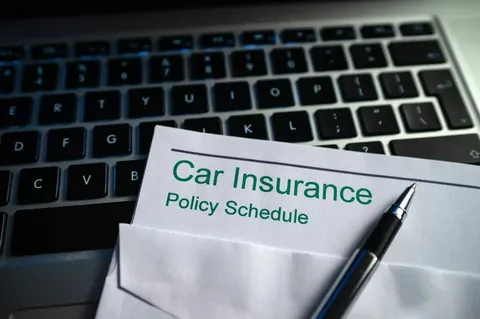
1. Introduction: Why Car Insurance Matters
Car insurance isn’t just a legal formality — it’s peace of mind on four wheels. Think of insurance like a safety net: you hope never to fall, but when you do, it catches you (and your finances). Whether you’re a daily commuter, weekend road-tripper, or city driver, understanding your policy saves you money and stress. Let’s break it down in plain English.
2. Basic Types of Coverage Explained
Not all coverages are created equal. Here are the essentials.
2.1 Liability Coverage
Liability covers injuries and property damage you cause to others. Most states require a minimum amount — but minimums often aren’t enough after a serious crash. Ask yourself: could my assets withstand a big lawsuit?
2.2 Collision Coverage
Collision pays to fix your car after you hit another vehicle or object (like a pole). If you lease or finance your car, collision is often mandatory.
2.3 Comprehensive Coverage
Comprehensive handles non-collision damage: theft, vandalism, floods, falling objects, or animal strikes. It’s the “acts of nature and nonsense” policy.
2.4 Uninsured / Underinsured Motorist Coverage
If you’re hit by someone without enough insurance (or any at all), this coverage protects you. It’s like an insurance policy for when someone else drops the ball.
3. Understanding Premiums and Deductibles
How much you pay and how much you pay when you claim are two different things.
3.1 What Affects Your Premium
Your premium is influenced by many factors:
3.1.1 Driving Record
Tickets and accidents = higher rates. Safe driving matters.
3.1.2 Vehicle Type
Luxury cars and sports cars cost more to insure. Small, safe cars are cheaper.
3.1.3 Location & Usage
Park in a high-theft neighborhood? Drive long distances daily? Expect a higher premium.
3.2 How Deductibles Work
A deductible is your out-of-pocket amount when you make a claim. Higher deductible = lower premium (but more expense after an accident). It’s a trade-off: monthly savings versus risk at claim time.
4. Common Exclusions and Pitfalls
Policies exclude certain situations — racing, intentional damage, and using a personal car for commercial rideshare without proper endorsements are common exclusions. Always read the fine print. Ignorance here can cost thousands.
5. How Claims Work: Step-by-Step
Claims feel overwhelming, but a clear process helps.
5.1 Immediate Actions After an Accident
Ensure safety first. Exchange information, photograph the scene, and notify police if required. Don’t admit fault at the scene — facts matter later.
5.2 Filing the Claim & Working with Adjusters
Report promptly, provide documentation (photos, police report), and communicate clearly with the adjuster. Keep a log of calls and receipts.
6. Ways to Lower Your Premiums
You don’t have to accept sky-high rates.
6.1 Discounts to Look For
Multi-policy (home + auto), safe driver, low-mileage, good-student, defensive-driving course — these can stack to lower premiums.
6.2 Improving Your Risk Profile
Improve credit (where allowed), remove high-risk drivers from your policy, and park in secured garages. Small changes add up.
7. Optional Add-Ons and Riders
Roadside assistance, rental reimbursement, gap insurance (for financed cars), and new-car replacement are optional — useful in certain situations. Evaluate the cost versus benefit.
8. How to Shop and Compare Policies
Get at least three quotes. Compare apples to apples: coverage limits, deductibles, and exclusions. Use independent reviews to judge claims satisfaction and financial strength of insurers.
9. State Requirements & Legal Considerations
Minimum liability limits vary by state. Some require uninsured motorist coverage. Know the law where you register your car — ignorance isn’t a defense.
10. Final Checklist Before Buying
- Do limits match your financial exposure?
- Are deductibles affordable?
- Which discounts apply?
- What’s the claims reputation of the insurer?
- Are there any policy exclusions you can’t accept?
11. Conclusion
Car insurance can feel like alphabet soup — liability, collision, comprehensive, UM/UIM — but it’s manageable when you break it into pieces. Start by assessing your needs, compare real quotes, and read the policy before you sign. A smart policy is the difference between a minor mishap and a major financial setback. Drive safely, but insure smartly.
12. FAQs
Q1: How much car insurance coverage do I really need?
A: At least enough liability to protect your assets beyond state minimums. If you have a mortgage, savings, or investments, consider higher limits.
Q2: Will my premium go up after one accident?
A: Often yes, especially if you’re at fault. Some insurers offer accident forgiveness; ask about it before you buy.
Q3: Is comprehensive coverage worth it on an older car?
A: Compare the annual premium vs. the car’s value. If annual premiums and deductible approach the car’s market value, it may not be worth it.
Q4: Can I drive another person’s car on their insurance?
A: Usually yes, but coverage can be secondary to the owner’s policy. Read both policies for clarity.
Q5: What should I do if my claim is denied?
A: Ask for written reasons, provide additional evidence, and consider filing an appeal with your insurer or a complaint with your state insurance regulator.
